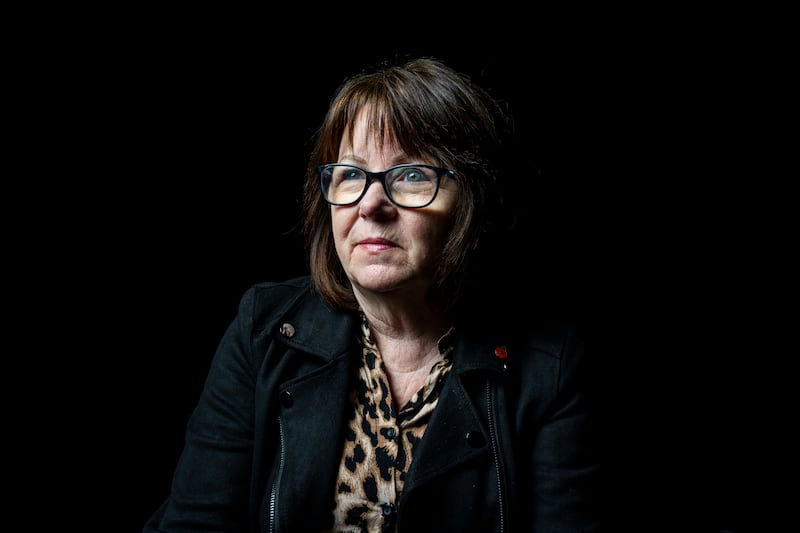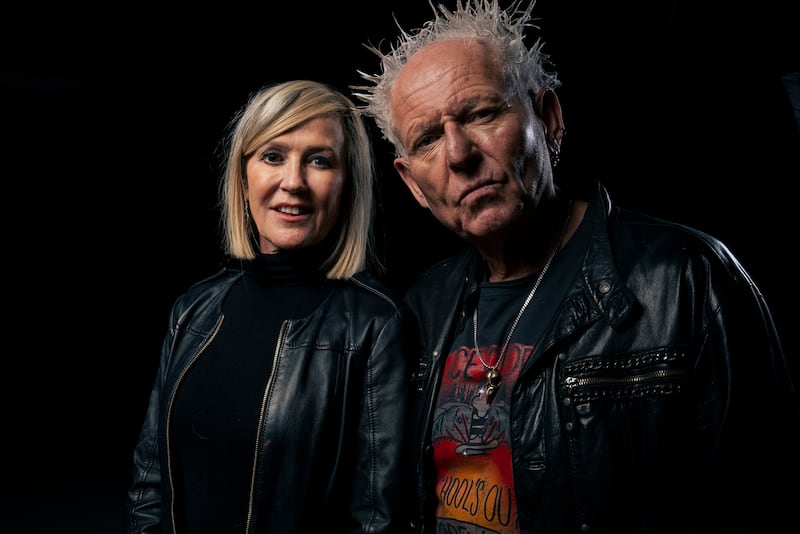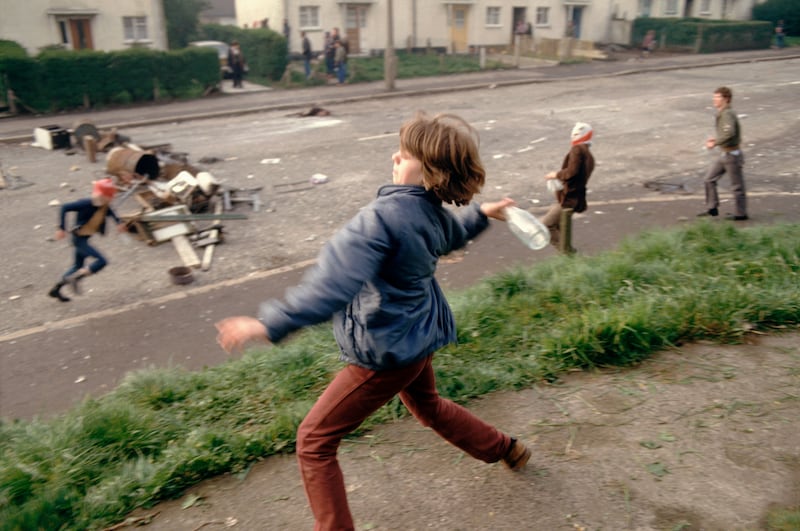John was raised on the loyalist Glencairn estate, in north Belfast. “I hated Catholics every minute of the day,” he says. “Tribalism was ingrained. We were fanatical in our loyalism. We were prouder than the British to be British.” He speaks of living in fear both of the IRA and of the dreaded Shankill Butchers, who masqueraded as taxi drivers, killing random Catholics in acts of unspeakable brutality. Then came a shocking discovery within his own family, which ramped up his terror even further.
James joined the loyalist paramilitaries as a 17-year-old boy and was put in charge of guns. “I put my hand on a Bible and swore an oath to God and Ulster.” He says he became addicted to violence. “I never questioned orders to kill. It’s what I signed up for. You got an adrenaline rush from it.”

John and James are among the contributors to Once Upon a Time in Northern Ireland, a powerful new five-part documentary about the conflict for the BBC and PBS, the US public broadcaster, by the award-winning director James Bluemel and the team behind the Bafta- and Emmy-winning Once Upon a Time in Iraq.
James, using black humour to cover his inner turmoil, confesses that the interview has taken him to “a bad place”, but he feels it was important to do it.
READ MORE
Made to commemorate the 25th anniversary of the Belfast Agreement, each part intercuts unfiltered, previously unheard personal testimonies with archive footage. The overarching aim is to give a voice to people who lived daily with the conflict in the North and continue to carry its fallout. A few of the participants are recognisable public figures – most are unknown; some opt to remain faceless and anonymous. All have shown enormous courage in agreeing to share intimate memories and challenging experiences with a worldwide television audience.
Encompassing three decades of history, Once Upon a Time in Northern Ireland distils a vast cache of television news footage and the interlocking stories of 25 interviewees into five one-hour programmes.
“Weirdly,” Bluemel says, “five hours is not very long to do it in. You can’t make it a definitive story of The Troubles, and you can’t hope to hit every story, so we had to make a selection. It was important that each programme linked in and built into a conjoined series but could also work successfully as a stand-alone, with its own identity and embedded themes and narrative arcs.
“We started to chart out events that would take viewers across that period of time. On top of that you overlay the characters because it’s their personal stories that map out a timeline of events. What was really important was that those human stories would come to the fore. You are led by the characters and what happened to them, rather than by the more traditional way of telling a story on an event-led basis.
“It’s a very complicated story, so chronology was a sensible element in keeping it intact. It’s the scaffolding that helps the viewer hold it together. As the story builds I found that I understood it much better by learning about the context and the things [that] led up to these events.”
Bluemel notes that, in spite of all the appalling events of The Troubles, there were those who managed to preserve some semblance of sanity. “If you’re looking for people who weren’t sucked into the violence, look to the artists,” he says.
In 1970s Belfast, a music-crazy radical named Terri Hooley opened a record shop in the city centre. Good Vibrations became a hub for artists and musicians from all backgrounds. Under its own record label, it released memorable songs by Northern Ireland punk bands like The Undertones and The Outcasts.

Greg Cowan, a member of The Outcasts, appears in the series alongside his wife, Yvonne. They met at the city’s Harp Bar, where the band regularly played. “It was a dreadful bar, a dump, but it was our dump,” Yvonne says. “It was a safe place where religion went out of the window and people came together through music.”
Hooley says: “When The Troubles came, my lovely city was divided. All life was sucked out of the place. Everything died. Good Vibrations became a little oasis in a sea of madness. I painted the toilet seats red and we had a great party.”
Fiona, a Derry girl, was a contestant in the 1986 Miss Ireland pageant. Refusing to define herself as a victim, she smiles stoically as she remembers her murdered brother, Jim. As a young girl, she admits, she cast admiring glances at good-looking soldiers, but that’s as far as it went. She did not become a ‘soldier doll’, the term given to local women who went with soldiers. At times, they were tied up, tarred and feathered as punishment for what was seen as fraternising with the enemy. Fiona holds mixed feelings about the individuals who carried out that treatment: “I do wrestle with it myself because I had moments in my life where I was completely in support of the paramilitaries. I felt like they were my protector. But, at the same time, what they were doing to their own people is the ultimate form of control, keeping everybody within their boundaries and within their tribe. They could be the good and the bad, the very bad.”

Ricky, a republican, reckons he married “the best-looking girl in west Belfast”. Even so, he broke his promise to her and kept up his membership of the IRA. “I let her down badly,” he admits. Bernadette recalls her fury at becoming the thing she feared: a prisoner’s wife. She still feels revulsion at the thought of visiting him during the blanket protests, rushing home to wash off the disgusting smell and the crust off his lips when she had to kiss messages from him.
“Bernadette has never told her story before because she thought she didn’t have one,” says Bluemel. “When I met her, with Ricky, she thought it quite strange that we were asking about her experiences while her husband was in prison. It took a long time for her to agree to take part, because she didn’t think that what she had to say would be interesting.”
Another Belfast woman named Bernadette adored her father, the IRA man Joe McDonnell. Imprisoned in the Maze, he was one of the first to volunteer to go on hunger strike. He urged his little daughter to join a cross-community group of children on a trip to the United States. Once there, she became a media star, giving startlingly articulate interviews about the need to “keep my daddy alive”, vowing to continue “helping on the streets and marching”. She learned the worst when, on her 11th birthday, she passed a burning bus and heard someone say that Joe McDonnell had died. “He missed out on life, on his family, but he did it for us, for his country. I am very proud of him,” she says.
“That simple human truth that Bernadette loved her father often gets overlooked,” Bluemel says. “She is the daughter of a hunger striker, and a whole section of the population will find that fact so difficult to overlook. But I hope that, like others who took part, people will look beyond that and find the human truth in her story.”
One wonders, given the honest, unfettered nature of the interviews, how Bluemel made his selection and then persuaded the contributors to take part.
“There’s a close-knit team of us, and together we try to find people who are expressive and communicative, who have the ability to reach out to viewers and pull them into their story. It’s down to meticulous research. Sometimes it’s good to look around the edges of the subject. Take the hunger strikes: it’s a story you think has already been told until you look at other people who were involved, like the wives or the mothers or the children.”

In all cases, there is a palpable sense of trust between film-maker and subject, something that Bluemel says was not offered easily.
“Some had told their story before and did not like the way it had been used. They harboured suspicion and concern about agreeing to be filmed. Showing the series on Iraq helped, because they could see the way it had been done before and could understand that there was a fairness and an even-handedness in the way we went about things.
“The other thing that helped was time. It’s about not rushing people, it’s listening on their terms and being very straight and honest with them. When we are filming those interviews, we kind of stop the clock and it becomes a liminal space. It’s very focused, calm, the studio is softly lit. It becomes a place that is beyond time somehow.
“It was crucial that there was never a hint of bias in our approach. You don’t need to agree with people’s politics to like them. In fact, you might even end up empathising with someone with whom you didn’t think you could. That was part of the series’ DNA from its inception.”
Many lines resonate long after the programmes have ended. From Hooley: “If my kids ask me, ‘What did you do in The Troubles, Daddy?’ I would say, ‘I partied a lot, I did a lot of drink and some drugs, I had a good time and I didn’t kill anybody.’”
June, a woman from a mainly Protestant community in Co Derry, describes herself as just a country girl from a sleepy village. “The Troubles were happening elsewhere,” she says. Yet this woman was fated to become the victim of an act of horrifying cruelty. Her husband, a policeman, was murdered by the IRA in 1981. “I say my prayers every night, but there’s one prayer I just can’t say: Forgive those who trespass against us,” she says.
Once Upon a Time in Northern Ireland begins on BBC Two on Monday, May 22nd.


















